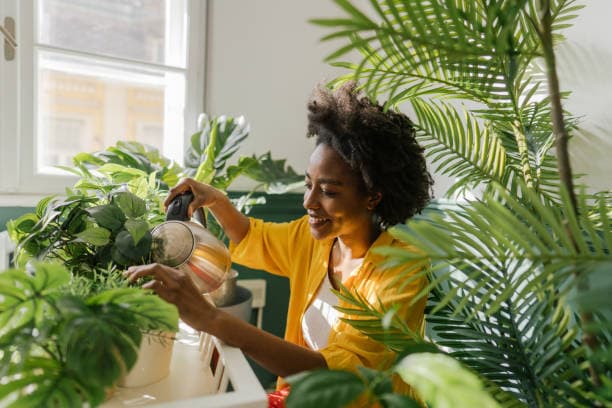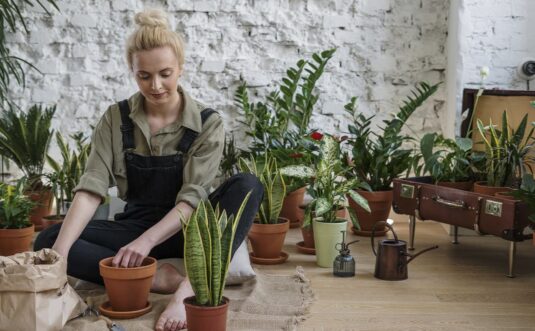Greenery in the home is not only pleasing to the eye, but also promotes better health by purifying the air. Plants can become natural filters that capture and neutralise toxic substances emitted by furniture and household chemicals. This makes them not just a decorative element, but an important part of a healthy lifestyle in an urban flat. Speaking of enhancing your home experience, checking out casinos online Curacao might also be interesting.
8 Healthy Plants for the Home
Houseplants not only decorate the interior, but also fulfil an important function of purifying the air, ensuring a healthy atmosphere in the home. Some plants are particularly useful due to their ability to remove harmful toxins and release oxygen. To create a healthy microclimate in your home, choosing the right plants plays a key role.
1. Chlorophytum (Spider Plant)
Chlorophytum is known for its ability to cleanse the air of formaldehyde and other toxic substances. This plant is ideal for beginner flower growers as it is very low maintenance. Chlorophytum is also safe for pets, making it a great choice for families with cats and dogs. In addition, it is able to please the owner with new shoots, which can be separated and grown as independent plants.
2. Sansevieria (Snake Plant)
Sansevieria, or snake tongue, requires minimal care and can grow in a variety of light levels. It effectively removes harmful substances such as benzene, xylene and trichloroethylene from the air. The plant prefers dry soil, so water it moderately. Sansevieria is known for its ability to release oxygen at night, making it an ideal plant for the bedroom.
3. Chrysanthemums
Chrysanthemums brightly decorate any space and effectively purify the air from ammonia, benzene and other toxins. These plants require ample sunlight and regular watering to bloom and purify the air. It is important to remember that chrysanthemums are toxic to pets, so they should be kept out of their reach. Chrysanthemums bloom for about six weeks, during which time they are most effective at purifying the air.
4. Ficus (Weeping Fig)
The ficus, or weeping willow, stands out for its ability to purify the air of formaldehyde, xylene and toluene. This plant adapts easily to indoor conditions, preferring moderate light without direct sunlight. Ficus can reach an impressive size, which is worth considering when choosing a place for it in the house. However, despite its advantages, ficus is toxic to cats and dogs, so it should be kept away from pets.
5. Dracaena
Dracaena is known for its ability to remove trichloroethylene from the air, which is often emitted from paints, varnishes and adhesives. This plant comes in a wide range of species, allowing you to find a unique specimen for any interior. Dracaena requires medium light levels and regular but moderate watering. It is important to note that Dracaena is toxic to pets, so it should be kept away from them.
6. Ivy (English Ivy)
Ivy, or English willow, is ideal for bathrooms as it helps to reduce mould. This plant is also effective in fighting harmful substances in the air such as formaldehyde and ammonia. Ivy prefers moderate light and regular watering, but can tolerate lower light levels as well. However, like many of the other plants on this list, ivy is toxic to cats and dogs.
7. Spathiphyllum (Peace Lily)
Spathiphyllum, or peace lily, brings beauty to the home with its bright white flowers. Not only does it beautify a room, but it also helps moisturise the air, which can reduce dust. Spathiphyllum requires a moderate amount of light and regular moistening of the soil. Like many other plants on this list, spathiphyllum is toxic to pets.
8. Aloe Vera
Aloe Vera not only improves air quality, but also serves as a source of healing gel that helps with burns and cuts. This plant is easy to care for and requires plenty of light and minimal watering. Aloe vera effectively absorbs substances such as formaldehyde and benzene commonly found in the home. Despite its beneficial properties, aloe is also toxic to cats and dogs, which is important to consider when placing it in the home.
Conclusion
Choosing houseplants is not just about their appearance. It is important to consider their ability to improve air quality and bring a healthy atmosphere into the home. The plants listed above are great choices for those who want to combine beauty with practicality.




